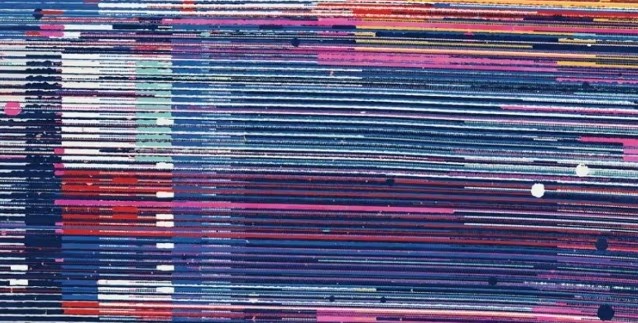The Algorithm That Appraises Art: The New Frontier of Cultural Finance
London, July 2025 – The news rippling from one newsroom to another and shaking the axis between art and global finance has a clear name: Appraisal Bureau. Once a niche start-up, it is now a concrete reality that is revolutionizing the way artworks are appraised, insured, fractionalized, and even collateralized. Its main tool? Artificial intelligence. And its field of action? The emerging—yet already strategic—market of fractional art.
ART & FINANCE
Charlotte Madeleine CASTELLI
7/8/20253 min read


London, July 2025. In recent months, the art ecosystem has witnessed a remarkable shift from traditional appraisal methods to augmented intuition powered by artificial intelligence. The breakthrough, reported by the Financial Times on June 18, marks a true turning point: Appraisal Bureau, a platform founded by Caroline Taylor, announced that its proprietary algorithms have reached 85% accuracy in art valuation, a result achieved in a matter of seconds and at a fraction of the cost, compared to the weeks and thousands of dollars that traditional appraisals required just a few years ago.
Fueled by a data pipeline of over 20 input sources including auction results, exhibition records, macroeconomic indicators, and high-resolution imagery, these AI models analyze metadata, market chronologies, and visual details simultaneously, replicating the structured approach already tested in the NFT space.
This acceleration proves especially crucial in the niche of fractional art ownership, where collectors and investors purchase shares of artworks rather than the full piece. Thanks to platforms like Masterworks (which manages over $900 million in assets), Artscapy, and Particle, it is now possible to calculate and update the Net Asset Value of shares in real time with full transparency. Intelligent AI infrastructures underpin this process, ensuring liquidity and reliability even for lesser-known or illiquid segments.
Technology now complements human judgment: while the algorithm collects and normalizes data, the expert interprets the work’s form, history, and context. Harry Smith of Gurr Johns, who co-developed tools such as Art Metadata, emphasizes that AI can dramatically accelerate comparative analysis, but the final valuation, especially when it comes to qualitative nuance, still requires the discernment of a trained professional.
Attention to nuance is, in fact, increasingly vital in a market where the gap between “retail replacement value” and “fair market value” can fluctuate by up to 40%. Algorithmic assessments push toward standardization, but still leave room for expert intervention when more interpretive judgment is required.
What dominates the discussion, however, is not just the impressive accuracy, up from 65% in 2022 to 75% in 2023, and now standing at 85%, but the speed at which this gap is narrowing. Forecasts suggest the models could reach near-human accuracy levels of 95% within the next 18 months. This creates fertile ground for tokenized art-backed loans, real-time art investment funds, and intelligent insurance policies for digital artworks—all underpinned by data-driven, transparent valuation methods.
Yet the rise of algorithmic standardization is not without risks. There is growing concern that such systems might favor “data-friendly” artworks, those well-documented in digital archives or recent auction sales, at the expense of more marginal, historically underrepresented voices. Model training quality still suffers from legacy biases skewed toward European and North American artists, which may distort the value attributed to works from diverse cultural backgrounds. Where AI models synthesize past trends and aesthetics, creative anomalies, linguistic ruptures, or urgent socio-political narratives risk being flattened or entirely overlooked.
Simultaneously, the growing adoption of AI is pushing auction houses, brokers, and collectors to rethink their operational frameworks: digital tools are entering every layer of the ecosystem, from inventory management and financial reporting to risk assessment. Appraisal Bureau has already launched an automatic valuation service for collectors, while Artory is tokenizing artworks on blockchain infrastructures based on verified historical datasets to enhance transparency. Even in the relatively discreet field of NFT insurance, providers like Marsh Insurance are using AI models to quantify insurable value—reflecting a market that is becoming increasingly sophisticated and targeted.
In this hybrid ecosystem, the expert’s role becomes even more critical: curators must learn to read algorithmic reports, understand their margins, and correct their blind spots when an artwork demands a more refined, culturally informed lens. Those who can navigate this convergence of aesthetics, computation, and market strategy will be the stewards of a new governance model for artistic value.
The signal is clear: art has begun to converse with the algorithmn, ot to surrender its soul, but to evolve. A new era unfolds in which value is no longer solely material, but also expressed through its quantitative reflection, through a digital mirror that multiplies interpretations and expands opportunity. The true challenge will be to preserve the complexity and richness of art—even when it becomes data.
Sincere thanks go to Caroline Taylor (Appraisal Bureau), Harry Smith (Gurr Johns), and Alessandro De Stasio (Artscapy) for their valuable insights, as well as to the Financial Times, The Art Newspaper, Artory, and Appraisals Expert—essential sources in deepening our understanding of this evolving landscape.
© Charlotte Madeleine Castelli | All rights reserved
